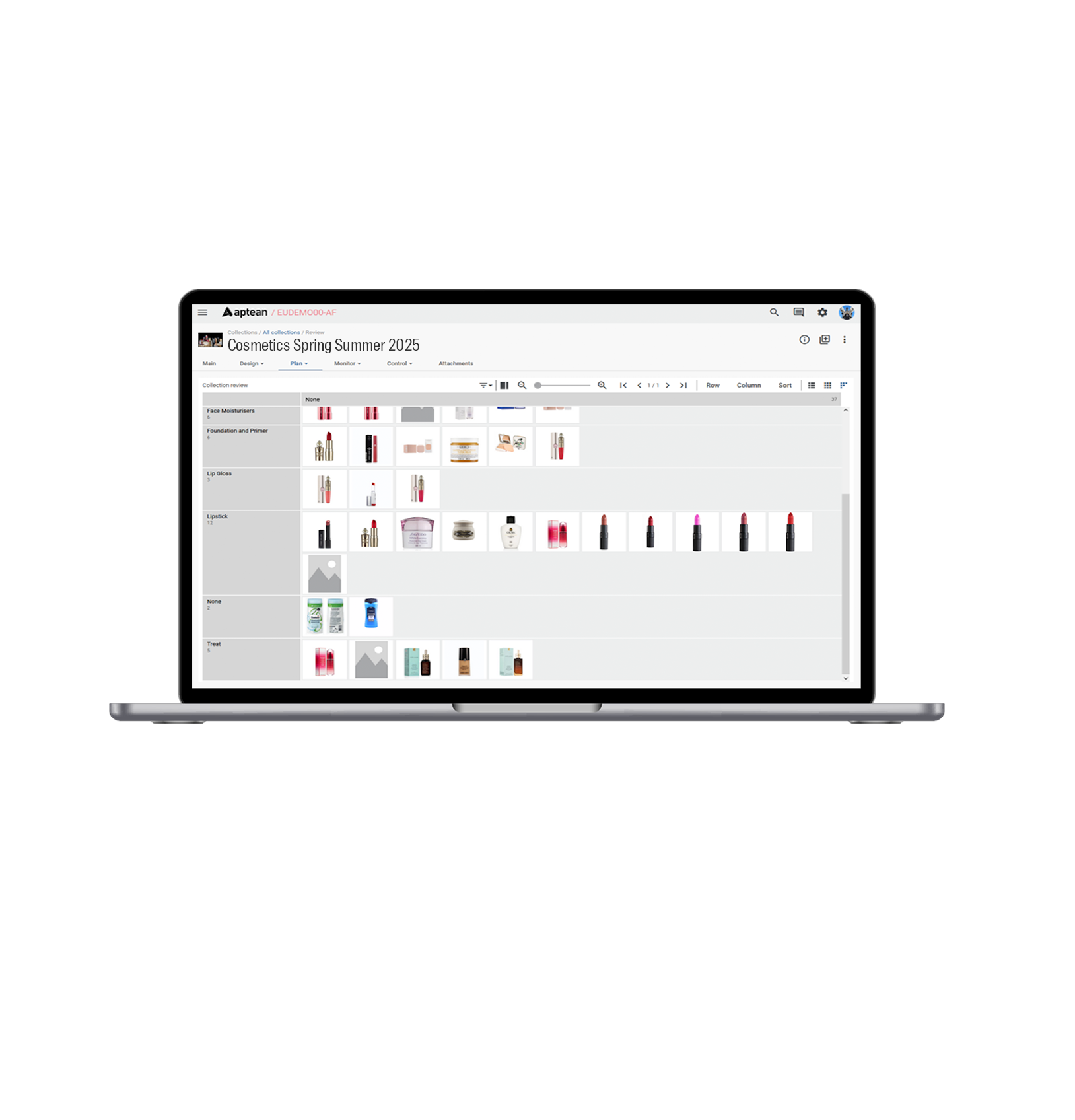The 6 Essential Steps in New Cosmetic Product Development and How PLM Solutions Improve the Process
The 6 Essential Steps in New Cosmetic Product Development and How PLM Solutions Improve the Process
The 6 Essential Steps in New Cosmetic Product Development and How PLM Solutions Improve the Process

Tomorrow, September 9, we observe International Makeup Day and, by extension, celebrate all that the world of cosmetics offers us. Cosmetic and personal care products offer different benefits for a wide variety of individuals, and that’s certainly something worth commemorating.
It’s a particularly exciting time for the industry right now, too, with positive trends emerging that will shape the future of the market. For one, there’s the push for more sustainable practices and products, with 92% of consumers stating that they’d rather support businesses that espouse environmental and social causes.
There’s also the increased emphasis on offering a variety of colors and shades that work with the full spectrum of human skin tones, helping to boost inclusivity and body positivity in the world of beauty. Healthy skincare is also on the rise, with related products now accounting for 40% of the market, and men are a sizeable portion of the buyer base, with that segment expected to reach a valuation of $18.92 billion globally by 2027.
Taking these developments and other shifts in consumer tastes into account, your cosmetics and personal care business will need to prioritize new product development (NPD) and conduct the process in order to remain relevant and profitable. To make sure your teams have the tools they need, you need to ensure that you have the right industry-specific product lifecycle management (PLM) software in place.
From there, you should follow these six basic steps to bring your new product to market and take full advantage of your PLM system and the benefits it offers at each stage.
1. Create the Product Brief
To begin, you’ll need a sound and well-constructed product brief—the document that outlines the business case, general product specifications and how the item will be presented to the target audience. While you won’t have exact details in this phase, you should strive to make the brief as complete as possible, covering all that you can of category, function, color, odor, texture, size and other key attributes.
Because many teams will be using the document as a reference and coming back to it often, you’ll need to make sure to include information that will help all involved stakeholders get their jobs done. Also keep in mind that it’s never too early to involve your compliance specialists—creating products to be compliant by design is the best practice to avoid unfortunate surprises down the line.
2. Perfect the Product Formulation
Now it’s time to let the creative minds in your research and development department do what they do best—iterate on the formula, fine-tune ingredient levels and determine the best processes for manufacturing according to product specifications. They’ll have the outline provided by the brief to get them started but should be given freedom to explore the possibilities.
A purpose-built PLM platform can truly empower your R&D team, giving them a single source of truth for product information and allowing them to digitally record the materials, concentrations and creation methods behind the prototypes they make. An advanced solution like Aptean’s PLM for personal care and cosmetics businesses can also flag allergen and other compliance concerns so that they’re apparent early on and can be addressed.
3. Source the Raw Materials
Once the product formula has been determined and spelled out in precise detail, you’re ready to start shopping around for the raw materials you’ll need not only to produce your new offering, but also those necessary to package it for retail. While cost will always be a factor to consider, keep in mind the importance of sustainability we mentioned at the outset as you evaluate various vendors.
In order to make sure you’ve got the right fit and are working with sources you can trust, it’s a good idea to get a number of suppliers to submit proposals complete with not only pricing but also information on origin and their own internal sustainability practices. Once you’ve found the partners you prefer, your PLM software can store and maintain all of their critical information for future reference.
4. Design the Packaging
Considering the fact that product packaging has a profound impact on perception given that it forms shoppers’ first impressions, that element can be almost as important as the item itself. Your marketing and art departments must convey a variety of different concepts in what is typically a fairly minimal space, but make sure they cover as much as possible, from use cases and appearance to any necessary health and safety disclosures.
A good PLM solution should offer a set of tools specifically for this step to help your highly qualified staff to leverage their intuitive artistic sense to choose the ideal font, colors and graphics. What’s more, a solid system will also let them share their ideas and concepts with others involved in the NPD process to get feedback and build out the best approach.
5. Dial in on Quality and Compliance
You want every experience your customers have with your brand to be positive, so at this point you need to test the quality of the finished goods in your initial production runs rigorously and tweak manufacturing processes accordingly to get consistent results. Also, for compliance, you’ll need to conduct microbiological, toxicology, stability and potentially other assessments to confirm that your product is entirely fit for consumer use.
Keep in mind that legislation on cosmetic product compliance varies from region to region and country to country, so make sure your professionals conduct the proper research and know the relevant laws pertaining to both the category of the item and the materials used in its manufacture. This is also the time to complete necessary documentation, including the Product Information File (PIF), Safety Data Sheet, Cosmetic Notification Form and more, as necessary.
Thankfully, Aptean’s PLM can automate that sometimes tedious portion of this stage and even translate the documents to different languages as the situation calls for it.
6. Validate the Final Product
Finally, we come to the last step, which is the official validation of the product and the completion of all required internal and external approvals. You’ll want to go back to the original product brief and make sure that what has been created still aligns with the goals you set out to accomplish, comparing your latest prototypes to the concepts laid out at the start.
While it’s not likely that you’ll need to make changes at this point, remain flexible and remember that preserving the hard work of everyone involved in the NPD process is of utmost importance. It’s better to be safe than sorry when it comes to putting out new cosmetic goods, as shoppers have plenty of choices on the market and you want to create loyal brand supporters and repeat customers by offering nothing but the best.
Forming a Foundation for Your Company’s Future
With International Makeup Day nearly upon us and the cosmetics and personal care industries evolving in dynamic and fascinating ways, now is a great time to jumpstart your digital transformation and prepare for the future by putting a PLM system in place. There are several reasons you should trust Aptean and our full suite of business solutions for your company’s needs.
First, there’s our decades of collective experience and in-depth knowledge of best practices, which we’ve put to use in developing our industry-specific, best-in-class PLM software. We understand the challenges that cosmetics and personal care product manufacturers face and have carefully crafted the features that you’ll need to effectively clear those hurdles.
Of course, there are also the benefits that our PLM platform offers—namely, faster time to market, better collaboration between the various departments involved in NPD and the International Nomenclature Cosmetic Ingredient (INCI) database built-in, ensuring you always use proper ingredient names and automatically generate your quali-quanti formula.
Finally, there’s our reputation for acting as a partner to our clients—guiding them through the implementation process and providing advice on other solutions that can bolster your modernization and digital transformation efforts.
We’re here to help your business get to the next level and meet the changing demands of the cosmetics and personal care industry. So, if you’re eager to learn more about Aptean’s PLM for cosmetic and personal care companies, contact us today. You can also request a personalized demo at your convenience to see the software in action.
Consult a cosmetics industry expert
Optimising your product lifecycle takes more than just any PLM – it requires one developed by experts who truly understand the everyday challenges you face. Want to see PLM software for cosmetics in action? Schedule a live demo today.



 John McCurdy | Senior Content Writer, Marketing
John McCurdy | Senior Content Writer, Marketing